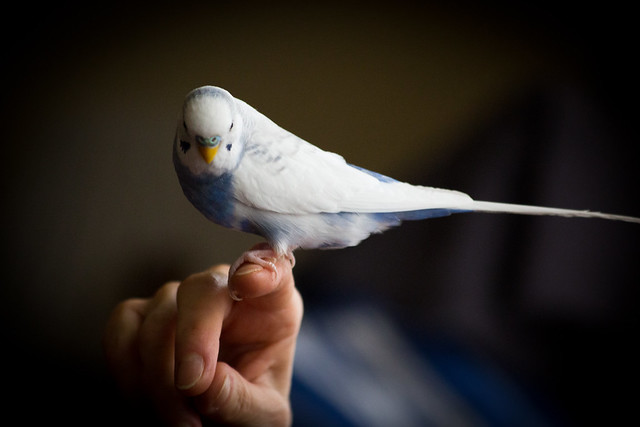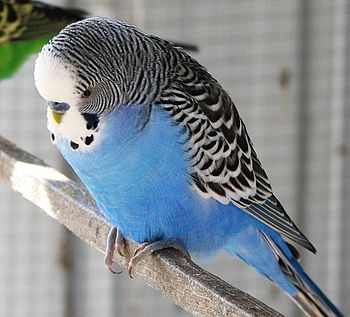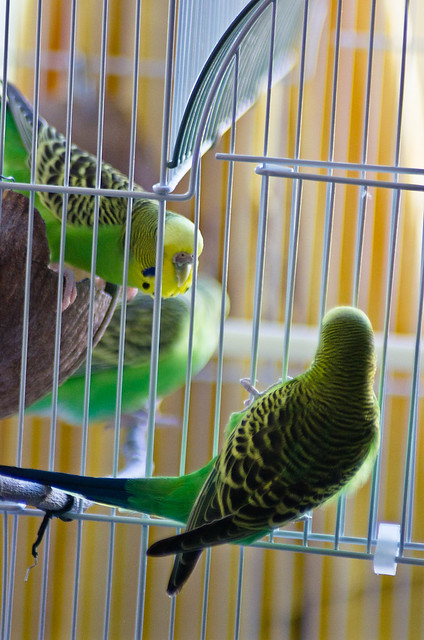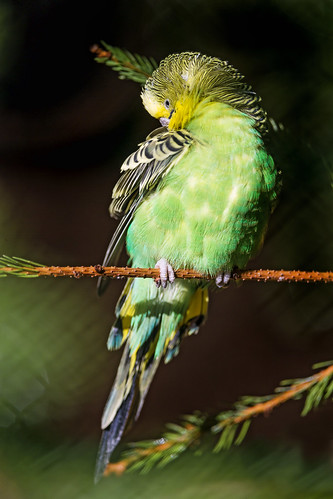 |
| Photo by Jordi Cucurull |
If you like your budgerigars , then you wish them to own an extended and happy life by your aspect. Sadly, there is a ton of confusion and content around what makes a healthy budgerigar diet. And, as we tend to all grasp, a balanced and wholesome diet is crucial to staying healthy. The truth is that budgies want a lot of identical diets as people to be healthy. Wherever we have a tendency to eat wheat, corn, or potatoes, they'll have seed or pellets instead; however, they have an honest mixture of recent fruits and vegetables, a bit like we have a tendency to do. In the wild budgies feed virtually completely on ripening grass seeds and nourishment, however ripening seeds have a distinct nutritionary content than absolutely mature ones.
, then you wish them to own an extended and happy life by your aspect. Sadly, there is a ton of confusion and content around what makes a healthy budgerigar diet. And, as we tend to all grasp, a balanced and wholesome diet is crucial to staying healthy. The truth is that budgies want a lot of identical diets as people to be healthy. Wherever we have a tendency to eat wheat, corn, or potatoes, they'll have seed or pellets instead; however, they have an honest mixture of recent fruits and vegetables, a bit like we have a tendency to do. In the wild budgies feed virtually completely on ripening grass seeds and nourishment, however ripening seeds have a distinct nutritionary content than absolutely mature ones.
Browse on to find out the way to tame this type of paraquet. Things you'll need when you want to tame your pet parrot this is Affection, Patience, Trust, and Love. Begin your Parrot Training with 10- to 15-minute sessions every day. These are going to be the tools for assembling a bond of trust. Visit your bird by his cage at concerning an equivalent time daily. Speak softly thereto, and leave your hand before the cage in order that he or she will see it. Do not wave it with any huge motions; however, simply leave it still in order that they'll see it. Ensure that you simply are not on the move lots throughout your initial few times of coaching.
with 10- to 15-minute sessions every day. These are going to be the tools for assembling a bond of trust. Visit your bird by his cage at concerning an equivalent time daily. Speak softly thereto, and leave your hand before the cage in order that he or she will see it. Do not wave it with any huge motions; however, simply leave it still in order that they'll see it. Ensure that you simply are not on the move lots throughout your initial few times of coaching.
Begin slowly gap the door to your budgie's cage when regarding four to seven days of simply approval your bird. Initially, the parakeet might act afraid, however with time and your trust, he or she is going to slowly begin to open up. Begin simply by departure your hand within the cage while not truly swing it closes to the bird. The concept is to let your parakeet get accustomed to having your hand within the cage. Hold your hand close to your shell parakeet once he or she has learned to trust your hand. Approach your bird slowly, so it doesn't scare him or her. Use your index as a perch for the shell parakeet. If all are properly done this type of parrot becomes a great pet.
get accustomed to having your hand within the cage. Hold your hand close to your shell parakeet once he or she has learned to trust your hand. Approach your bird slowly, so it doesn't scare him or her. Use your index as a perch for the shell parakeet. If all are properly done this type of parrot becomes a great pet.
|

















